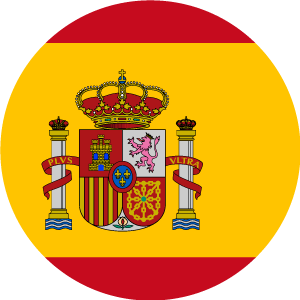ACTAM: Cooperative Multi-Agent System Architecture for Urban Traffic Signal Control
Summary :
The traffic congestion problem in urban areas is worsening since traditional traffic signal control systems cannot provide] efficient traffic regulation. Therefore, dynamic traffic signal control in Intelligent Transportation System (ITS) recently has received increasing attention. This study devised a multi-agent architecture, the Adaptive and Cooperative Traffic light Agent Model (ACTAM), for a decentralized traffic signal control system. The proposed architecture comprises a data storage and communication layer, a traffic regulation factor processing layer, and a decision-making layer. This study focused on utilizing the cooperation of multi-agents and the prediction mechanism of our architecture, the Forecast Module, to forecast future traffic volume in each individual intersection. The Forecast Module is designed to forecast traffic volume in an intersection via multi-agent cooperation by exchanging traffic volume information for adjacent intersections, since vehicles passing through nearby intersections were believed to significantly influence the traffic volume of specific intersections. The proposed architecture can achieve dynamic traffic signal control. Thus, total delay time of the traffic network under ACTAM can be reduced by 37% compared to the conventional fixed sequence traffic signal control strategy. Consequently, traffic congestion in urban areas can be alleviated by adopting ACTAM.
- Publication
- IEICE TRANSACTIONS on Information Vol.E88-D No.1 pp.119-126
- Publication Date
- 2005/01/01
- Publicized
- Online ISSN
- DOI
- 10.1093/ietisy/e88-d.1.119
- Type of Manuscript
- PAPER
- Category
- Distributed Cooperation and Agents
Authors
Keyword
Latest Issue
Copyrights notice of machine-translated contents
The copyright of the original papers published on this site belongs to IEICE. Unauthorized use of the original or translated papers is prohibited. See IEICE Provisions on Copyright for details.
Cite this
Copy
Ruey-Shun CHEN, Duen-Kai CHEN, Szu-Yin LIN, "ACTAM: Cooperative Multi-Agent System Architecture for Urban Traffic Signal Control" in IEICE TRANSACTIONS on Information,
vol. E88-D, no. 1, pp. 119-126, January 2005, doi: 10.1093/ietisy/e88-d.1.119.
Abstract: The traffic congestion problem in urban areas is worsening since traditional traffic signal control systems cannot provide] efficient traffic regulation. Therefore, dynamic traffic signal control in Intelligent Transportation System (ITS) recently has received increasing attention. This study devised a multi-agent architecture, the Adaptive and Cooperative Traffic light Agent Model (ACTAM), for a decentralized traffic signal control system. The proposed architecture comprises a data storage and communication layer, a traffic regulation factor processing layer, and a decision-making layer. This study focused on utilizing the cooperation of multi-agents and the prediction mechanism of our architecture, the Forecast Module, to forecast future traffic volume in each individual intersection. The Forecast Module is designed to forecast traffic volume in an intersection via multi-agent cooperation by exchanging traffic volume information for adjacent intersections, since vehicles passing through nearby intersections were believed to significantly influence the traffic volume of specific intersections. The proposed architecture can achieve dynamic traffic signal control. Thus, total delay time of the traffic network under ACTAM can be reduced by 37% compared to the conventional fixed sequence traffic signal control strategy. Consequently, traffic congestion in urban areas can be alleviated by adopting ACTAM.
URL: https://global.ieice.org/en_transactions/information/10.1093/ietisy/e88-d.1.119/_p
Copy
@ARTICLE{e88-d_1_119,
author={Ruey-Shun CHEN, Duen-Kai CHEN, Szu-Yin LIN, },
journal={IEICE TRANSACTIONS on Information},
title={ACTAM: Cooperative Multi-Agent System Architecture for Urban Traffic Signal Control},
year={2005},
volume={E88-D},
number={1},
pages={119-126},
abstract={The traffic congestion problem in urban areas is worsening since traditional traffic signal control systems cannot provide] efficient traffic regulation. Therefore, dynamic traffic signal control in Intelligent Transportation System (ITS) recently has received increasing attention. This study devised a multi-agent architecture, the Adaptive and Cooperative Traffic light Agent Model (ACTAM), for a decentralized traffic signal control system. The proposed architecture comprises a data storage and communication layer, a traffic regulation factor processing layer, and a decision-making layer. This study focused on utilizing the cooperation of multi-agents and the prediction mechanism of our architecture, the Forecast Module, to forecast future traffic volume in each individual intersection. The Forecast Module is designed to forecast traffic volume in an intersection via multi-agent cooperation by exchanging traffic volume information for adjacent intersections, since vehicles passing through nearby intersections were believed to significantly influence the traffic volume of specific intersections. The proposed architecture can achieve dynamic traffic signal control. Thus, total delay time of the traffic network under ACTAM can be reduced by 37% compared to the conventional fixed sequence traffic signal control strategy. Consequently, traffic congestion in urban areas can be alleviated by adopting ACTAM.},
keywords={},
doi={10.1093/ietisy/e88-d.1.119},
ISSN={},
month={January},}
Copy
TY - JOUR
TI - ACTAM: Cooperative Multi-Agent System Architecture for Urban Traffic Signal Control
T2 - IEICE TRANSACTIONS on Information
SP - 119
EP - 126
AU - Ruey-Shun CHEN
AU - Duen-Kai CHEN
AU - Szu-Yin LIN
PY - 2005
DO - 10.1093/ietisy/e88-d.1.119
JO - IEICE TRANSACTIONS on Information
SN -
VL - E88-D
IS - 1
JA - IEICE TRANSACTIONS on Information
Y1 - January 2005
AB - The traffic congestion problem in urban areas is worsening since traditional traffic signal control systems cannot provide] efficient traffic regulation. Therefore, dynamic traffic signal control in Intelligent Transportation System (ITS) recently has received increasing attention. This study devised a multi-agent architecture, the Adaptive and Cooperative Traffic light Agent Model (ACTAM), for a decentralized traffic signal control system. The proposed architecture comprises a data storage and communication layer, a traffic regulation factor processing layer, and a decision-making layer. This study focused on utilizing the cooperation of multi-agents and the prediction mechanism of our architecture, the Forecast Module, to forecast future traffic volume in each individual intersection. The Forecast Module is designed to forecast traffic volume in an intersection via multi-agent cooperation by exchanging traffic volume information for adjacent intersections, since vehicles passing through nearby intersections were believed to significantly influence the traffic volume of specific intersections. The proposed architecture can achieve dynamic traffic signal control. Thus, total delay time of the traffic network under ACTAM can be reduced by 37% compared to the conventional fixed sequence traffic signal control strategy. Consequently, traffic congestion in urban areas can be alleviated by adopting ACTAM.
ER -




















